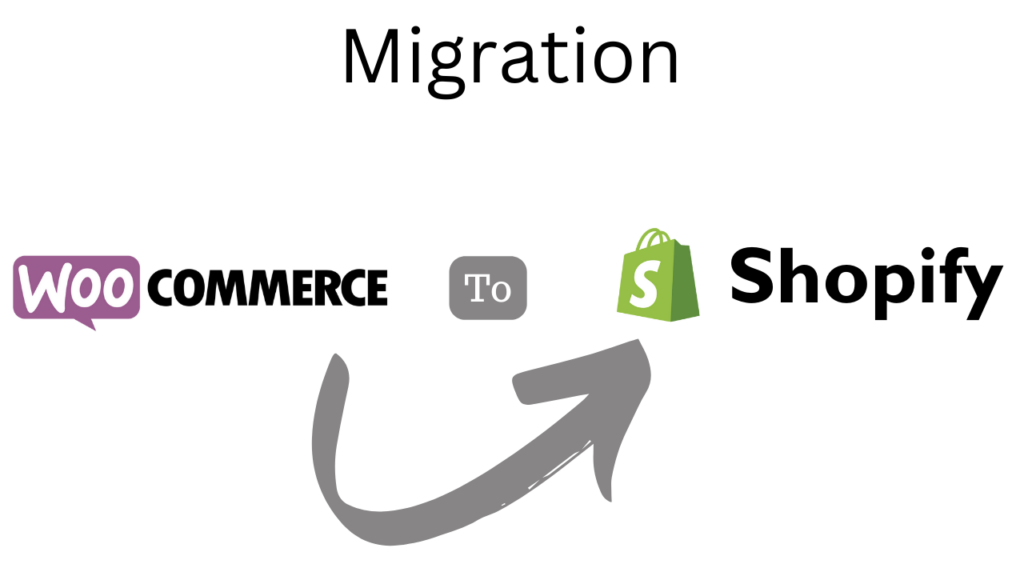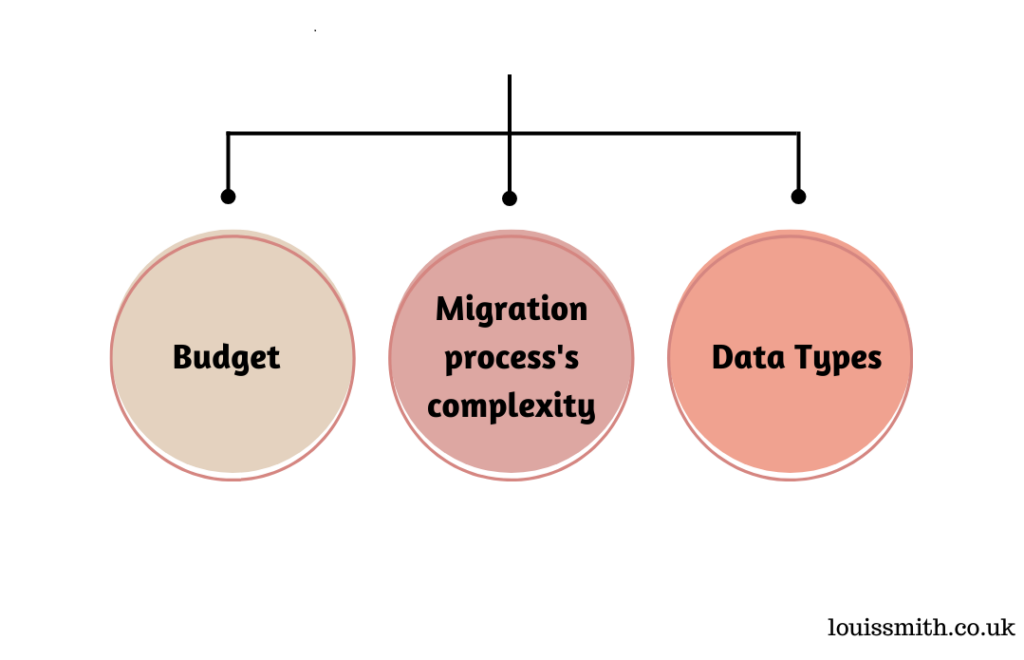Simplifying Your Transition Journey 📈

In my experience, the migration process can be a bit challenging, but it’s quite doable with the right resources and guidance.
In this article, I will show you a step-by-step approach I use when migrating from WooCommerce to Shopify.
There are different methods to approach the WooCommerce to Shopify migration;
- Manual migration
- Use an automated shopping cart migration solution
- Hire a developer or agency
It’s important to get the process right to ensure a smooth transition for your online store. Let’s dive in.
Understanding Woocommerce and Shopify📊
I have worked with both WooCommerce and Shopify platforms.
And I can attest to the fact that they are both excellent platforms for creating and managing online stores.
Both platforms have their own pros and cons. But ultimately, the choice between them comes down to the specific needs of your business and your personal preferences.
WooCommerce is a free, open-source plugin for WordPress, which means it’s highly customisable and offers a lot of flexibility when setting up an online store.
WooCommerce allows you to choose from a wide range of themes and plugins, making it easy for you to create a unique, tailored shopping experience for your customers.
However, this added flexibility comes with a cost. Managing a WooCommerce store can be more time-consuming and requires a bit more technical expertise than a Shopify store. Especially if you want to achieve advanced customisations.
On the other hand, Shopify is a user-friendly, all-in-one platform that simplifies the process of setting up an online store.
While it is true that its ease of use has turned it into a preferred choice for many beginners, Shopify offers advanced features and tools as well.
Unlike WooCommerce, Shopify charges a monthly fee, and its themes and apps can also come with additional costs.
One of the main advantages of Shopify is that it includes hosting, security, and updates, ensuring your store runs smoothly without you having to devote much time to maintenance and troubleshooting.
Preparation for the Migration

As you prepare for the WooCommerce to Shopify migration, there are major tasks you need to pay attention to. This will ensure a smooth and easier transition. We’ll be focusing on asset organisation and creating a backup.
Asset Organisation
Before beginning the migration process, it’s crucial for you to organise your assets properly. This includes categorising products, streamlining collections, and consolidating images.
By doing so, you’ll not only enable a smoother migration process, but also make it easier to manage your Shopify store.
- Product categories: Review and consolidate product categories for easier navigation and a consistent look in the new store.
- Collections: Identify and group similar products together, making them easier to discover for customers.
- Images: Be sure to optimise and organise product images, as well as other visual assets like banners and thumbnails.
Creating a Backup
Another important step before migration is to create a backup of your WooCommerce website. This way, you’ll have something to cycle back to in case anything goes wrong during the process.
To create a backup, follow these steps:
- Database backup: Use a plugin or your hosting provider’s interface to export the entire WooCommerce database.
- File backup: Create a copy of all website files including themes, plugins, media, and other important assets.
- External storage: Store the backup safely in external storage or cloud services like Google Drive or Dropbox.
Choosing a Migration Tool💻😄

There are various tools available online that can help make the process more seamless. Some popular tools that I used include;
- Cart2Cart
- Migrate My Store
- WP-Lister
However, you need to consider a few points before choosing any migration tool.
#1 Budget
These migration tools usually come with a price tag. While some tools offer a one-time cost, others might have a subscription-based model. It’s important to choose a tool that not only fits into your budget but also provides the features and support you need.
#2 Migration process’s complexity
Some tools might require a bit of technical knowledge, while others claim to offer a seamless, user-friendly experience. If you are not a technical expert, It’s better to choose a tool that offers an easy-to-use interface and clear instructions.
#3 Data Types
It’s important to check the tool’s ability to migrate all the data types. You will need a tool that can transfer data types, such as product information, customer data, and order history.
Different tools might have different limitations regarding the data they can migrate. Reading user reviews and the tool’s documentation can give you insights into the performance and potential issues that you might face.
Migration Process🔄

Product Migration
The first step in migrating a store is transferring products from WooCommerce to Shopify.
This process involves exporting the product data from the WooCommerce store as a CSV file and then importing it into the Shopify store.
During this process, you need to ensure that all necessary product data, such as titles, descriptions, images, and variants, are included in the CSV file. Sometimes, it may be necessary to make adjustments in the CSV file to match the format required by Shopify.
Importing products can be done through the Shopify admin panel. You can upload the CSV file, map the fields, and initiate the import process.
While importing, you may encounter conflicts or errors, but Shopify provides an option to resolve them within the interface.
Customer Data Transfer
The next step in the migration process is transferring customer data from WooCommerce to Shopify.
Similar to the product migration, customer data can be exported from WooCommerce as a CSV file, and later imported into Shopify. This process involves exporting customer names, email addresses, billing addresses, shipping addresses, and other relevant data.
In some cases, the CSV file might need adjustments to match Shopify’s format requirements. Once the file is ready, you can import it through the Shopify admin panel, and any errors or conflicts that arise can be addressed in the platform’s interface.
Order History Migration
Finally, the last step in the migration process is transferring order history from WooCommerce to Shopify.
This process is also done through a CSV file, including all necessary information such as order numbers, items purchased, taxes, discounts, and shipping fees.
Again, the CSV file format might need some adjustments to meet Shopify’s requirements, but once this is done, the file can be imported through the Shopify admin panel.
Post Migration Checks

After successfully migrating from WooCommerce to Shopify, it’s important to perform some post-migration checks.
In this section, I will cover two critical areas to pay attention to:
Functionality Testing
Once the migration process is complete, you need to thoroughly test the functionality of your new Shopify store. This includes:
Product Listings: Make sure all products have been accurately migrated, including their images, descriptions, variations, and pricing.
Payment Gateways: Double-check that your new store’s payment gateways are configured correctly. This ensures customers can successfully make purchases.
Shipping Settings: Verify that the shipping methods and rates are accurate, ensuring customers receive their orders on time.
Tax Settings: Confirm that tax settings are correctly configured, aligning with your business’s location and legal requirements.
SEO and Link Redirection
Preserving the search engine ranking and ensuring that customers aren’t directed to broken links are also important aspects of the migration process.
To achieve this, I usually focus on the following:
URL Redirects: Ensure all previous WooCommerce URLs are accurately redirected to their corresponding Shopify pages. This is to prevent customers from landing on “Page Not Found” errors.
Meta Tags: Verify that meta titles and descriptions for products, categories, and pages have been properly migrated from WooCommerce to Shopify. This helps maintain your search engine ranking.
Site Structure: Make sure that your new Shopify store’s site structure is organised and clear. This will aid both customers and search engines to easily navigate through the site.
Migration Challenges: Troubleshooting and Solutions😊
#1 Data Mapping and Structure
Problem: WooCommerce and Shopify have different data structures and attributes. So, it can be challenging to map data correctly during migration.
Solution: I use a migration tool or service that handles data mapping and structure conversion. Verify that product attributes, categories, tags, and customer data are transferred accurately.
#2 Product Variations
Problem: WooCommerce uses a flexible variation system, while Shopify has a more structured approach. Migrating variable products with multiple options and variations can be tricky.
Solution: Before migration, simplify product variations if possible. Use a migration tool that can handle variable products well, or be prepared to recreate them manually in Shopify.
#3 URL Redirects
Problem: Changing the structure of URLs during migration can lead to broken links and loss of SEO ranking.
Solution: You’ll need to implement 301 redirects to map your old URLs to their corresponding new Shopify URLs. You can use Shopify’s built-in URL redirects or a third-party app.
#4 Image Handling
Problem: Image file paths and formats may differ between WooCommerce and Shopify.
Solution: Before migration, ensure that image file names and paths are compatible. Use an image optimisation tool to resize and optimise images for Shopify’s standards.
#5 SEO Data
Problem: SEO meta tags, descriptions, and keywords need to be transferred without losing search engine ranking.
Solution: You can migrate SEO data using a dedicated plugin or service. Ensure that title tags, meta descriptions, and structured data remain consistent.
#6 Custom Functionality
Problem: WooCommerce allows for extensive customisation with plugins, which may not have direct equivalents in Shopify.
Solution: What I do is identify essential custom functionalities and find Shopify apps or custom development solutions to replicate them. Some advanced features might require coding.
#7 Shipping and Tax Configuration
Problem: Shipping and tax settings are different between WooCommerce and Shopify.
Solution: Manually configure shipping rates and tax settings in Shopify to match your previous setup. Double-check the accuracy of these settings before going live.
#8 Payment Gateway Integration
Problem: WooCommerce supports various payment gateways that may not be available in Shopify, or you may need to reconfigure your payment gateways.
Solution: You can choose from Shopify’s supported payment gateways or work with a developer to integrate custom payment solutions.
#9 Testing and Quality Assurance
Problem: Migrating a live store without thorough testing can lead to errors and disruptions.
Solution: I usually set up a staging environment to test the migration process thoroughly. This is to ensure that all data, functionality, and design elements work as expected before going live.
#10 Customer Notifications
Problem: Customers may be confused by changes in the website and order processes.
Solution: You can communicate the migration to your customers through email, social media, or your website. Provide detailed instructions for any changes they need to be aware of.
Wrapping It Up
As an experienced SEO expert with a proven track record of helping businesses grow their online presence, I can help you plan and execute your migration from WooCommerce to Shopify.
If you’re looking for a seamless transition while preserving and improving your search engine rankings, don’t hesitate to reach out. Let’s work together to ensure your business’s success on the Shopify platform.
Contact me today, and let’s get started!😎
Ready To Migrate To Shopify? ✅
Create a winning SEO/UX campaign with a Shopify CMS for your brand:
- Get worldwide custom support
- Build an eCommerce brand on a thriving platform
- Increase your organic sales
- Better user experience (UX)
- Improved conversion rate optimisation
GET IN TOUCH
Schedule an SEO session and get started on the path to grow your eCommerce store
You’re just one click away from improving your product rankings, increasing sales, and growing your brand’s market share against competitors.
#1 User-friendly Interface
The admin dashboard is easy to navigate, and you can manage your products, orders, and marketing campaigns without any difficulty.
#2 Affordability
Shopify offers a range of pricing plans that suit the budget and needs of all businesses, be it small startup or a well-established enterprise.
#3 24/7 Customer Support
Business owners always appreciate the availability of round-the-clock customer support. Shopify offers support via phone, live chat, and email to resolve any issues that may arise.
#4 Scalability
Shopify allows you to easily scale your store as your business grows. You can add new features and customisations without any limitations.
#5 Apps and Integrations
Shopify has an extensive app store, allowing you to choose from a wide variety of tools to enhance and streamline your online store.
#6 Mobile Responsiveness
Shopify ensures that your online store stays visually and functionally optimised on all types of devices. This feature is crucial in today’s mobile-driven market.
#7 SEO-friendly
Shopify websites come with built-in SEO tools, which can help you increase the visibility of your online store and organically attract traffic.

